#geoffrey sonnabend
Explore tagged Tumblr posts
Text





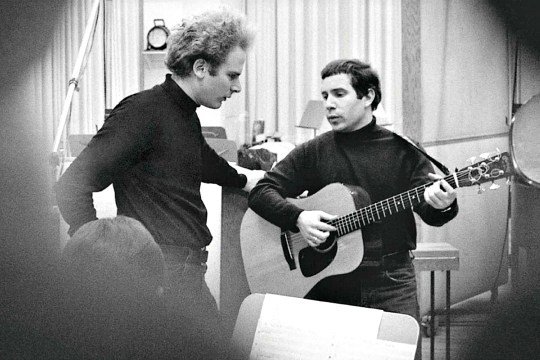
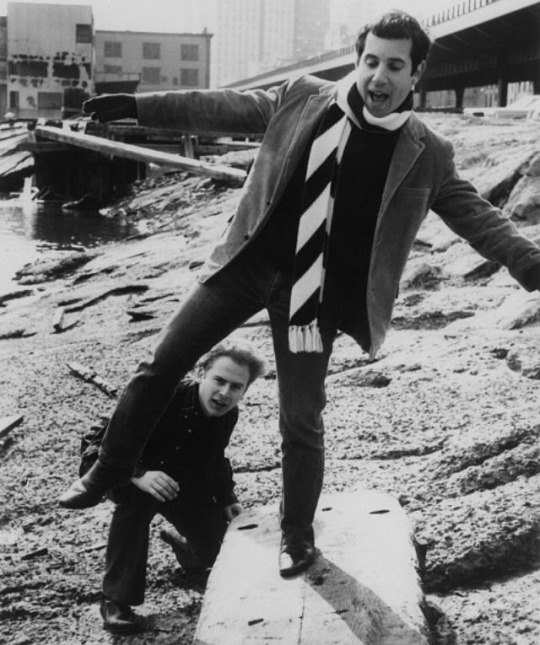

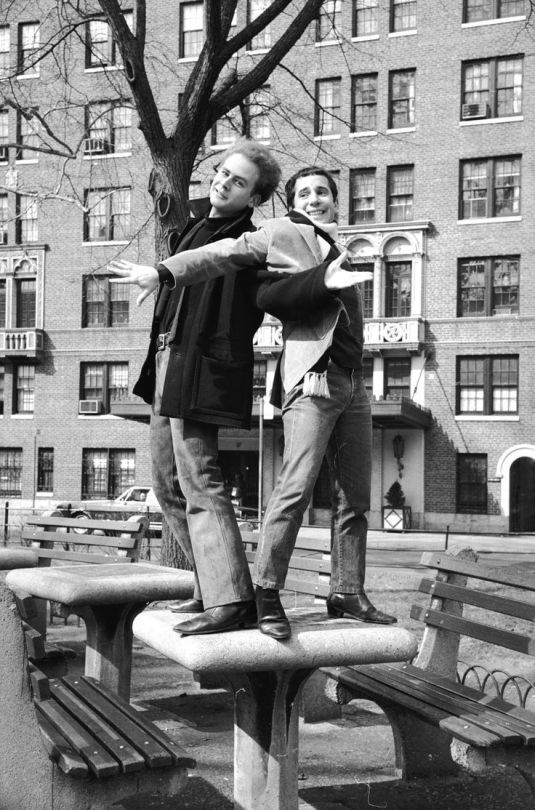

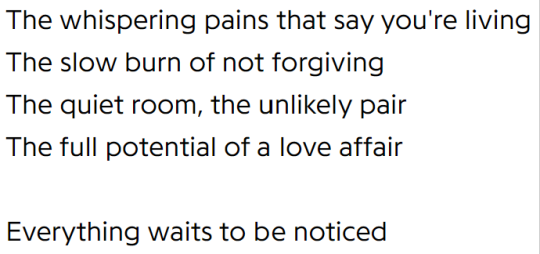





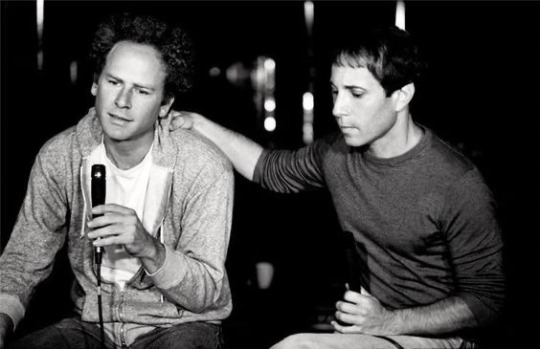
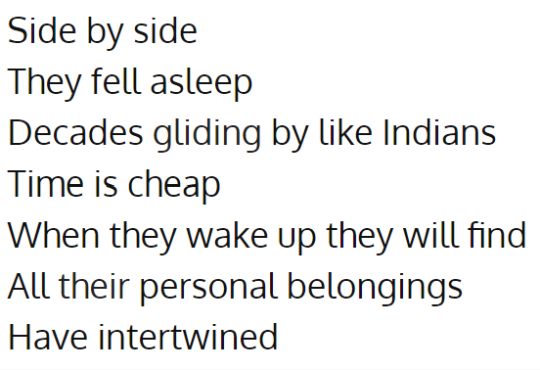


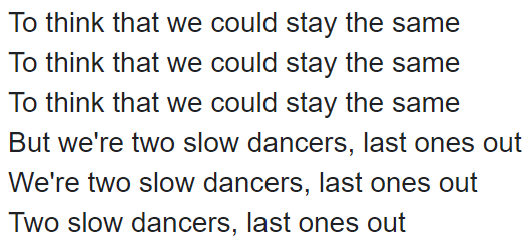

Song for the asking, Simon&Garfunkel / Blue bucket of gold, Sufjan Stevens / The Love Song of J. Alfred Prufrock, T.S. Eliot / Everything waits to be noticed, A. Garfunkel / Still Water prose poems, 48, A. Garfunkel / Obliscence, Theories of Forgetting and the Problem of Matter by Geoffrey Sonnabend, MJT, V. Worth / Rene and Georgette Magritte with their dog after the war, P. Simon / Two slow dancers, Mitski
124 notes
·
View notes
Photo

'We, amnesiacs all, condemned to live in an eternally fleeting present, have created the most elaborate of human constructions, memory, to buffer ourselves against the intolerable knowledge of the irreversible passage of time and the irretrievability of its moments and events.' —Geoffrey Sonnabend, from 'Obliscence: Theories of Forgetting and the Problem of Matter.'
3 notes
·
View notes
Quote
We, amnesiacs all, condemned to live in an eternally fleeting present, have created the most elaborate of human constructions, memory, to buffer ourselves against the intolerable knowledge of the irreversible passage of time and the irretrievability of its moments and events.
Geoffrey Sonnabend, Obliscence, Theories of Forgetting and the Problem of Matter (cf. “Valentine Worth,” cf. David H. Wilson of the Museum of Jurassic Technology)
6 notes
·
View notes
Photo

a beautiful gif that beatifully illustrates Geoffrey Sonnabend - Obliscence: Theories Of Forgetting and The Problem Of Matter
i want to give credit but don��t know who?? anybody know who made this??!
#obliscence#mjt#museum of jurassic technology#Geoffrey Sonnabend - Obliscence: Theories Of Forgetting and The Problem Of Matter#animated .gif#geoffrey sonnabend#theories of forgetting
1 note
·
View note
Text
The Figures in fourteen lines : an interview with Geoffrey Young

this interview was conducted over email from August to December 2016
Before settling in Great Barrington, Massachusetts in 1982, Geoffrey Young spent student years in Santa Barbara (UCSB), and Albuquerque (UNM), then lived for two years in Paris (a Fulbright Fellowship year followed by a six-month stint working for La Galerie Sonnabend). From 1975-1982 he lived in Berkeley (two sons born). His small press, The Figures (1975-2005), founded in Berkeley, published more than 135 books of poetry, art writing, and fiction.
He has directed the Geoffrey Young Gallery for the last 25 years, as well as written catalog essays for a dozen artists.
His own recent books include Click Here to Forget, Isolate Flecks, 2016; All the Anarchy I Want, Lonely Woman, 2013; Dumbstruck, Yawning Abyss, 2013, with paintings by Daniel Heidkamp; The Point Less Taken, The Figures, 2013, with drawings by Lucas Reiner; and Get On Your Pony & Ride, Non-Fiction, 2012, with paintings by Chie Fueki.
A chapbook of sonnets, THIRTY-THREE, recently appeared through above/ground press.
Q: Your legendary small press, The Figures, produced more than one hundred titles over thirty years before you closed shop. It might be an oversimplified question, but how did you first get into writing and publishing?
A: Writing, besides being a subject we were all taught in school, and were expected to use with reasonable skill, in book reports and term papers, was also something we could do on our own to account for personal experience. That’s how, slowly, I found my way to writing.
As for publishing, the most conventional door of entry for young poets is running their own literary mag, and that was true for me, as well. I helped a college friend, Allen Schiller, put out copies of his mag, Stooge, and pretty soon, back around 1972, I was doing issues of his mag, too (which he encouraged, being non proprietary).
READ MORE
1 note
·
View note
Text
Jean Royère
Jean Royère. Diseñador de mobiliario e interiores.
Jean Royère (1902, París, Francia – 1981, Pensilvania, Estados Unidos) fue un diseñador pionero de un estilo original que combinaba colores brillantes con formas orgánicas y biomórficas, hechos con materiales preciosos dentro de una amplia gama de logros imaginativos.
Jean Royère nació dentro de una familia adinerada, y en 1931, a los 29 años, renunció a una posición cómoda en el comercio de importación y exportación (en donde inicialmente se había establecido profesionalmente) para establecer su negocio como diseñador de interiores buscando la aventura.
Royère quería experimentar esta aventura con pasión, sin principios ni reglas, pero él, que había sido un estudiante malo, se convirtió en un gran trabajador y supo asimilar las nuevas técnicas y enriquecerse con todas las experiencias.
Se adscribió a su nuevo oficio como aprendiz de Pierre Gouff, con quien aprendió la meticulosa artesanía de la ebanistería en los talleres del Faubourg Saint-Antoine de París.
En 1934 realizó su primera comisión de diseño profesional, la muy aclamada remodelación del Café Brasserie del lujoso Hotel Carlton en los Campos Elíseos, lanzando su carrera de la noche a la mañana, y obteniendo una gran popularidad.
Gracias a este éxito inicial y a su característico estilo innovador, una combinación de colores vivos, formas sinuosas y materiales preciosos, Jean Royère se convirtió rápidamente en un muy solicitado diseñador de interiores internacional.
En 1944, fundó su propia compañía y comenzó a construir una clientela global.
Diseñó habitaciones y muebles lúdicos y brillantes, lujosos y sofisticados en toda Europa, América y Oriente Medio; y entre sus patrocinadores y clientes de renombre -que le confiaron el diseño de sus palacios- estaban el rey Hussein de Jordania, el Sha de Irán y el rey Farouk I (el penúltimo rey de Egipto y Sudán), que quedaron cautivados por su libertad creativa y su elegancia formal.
En la década de 1950 Royère fue una figura clave de la vanguardia, abordando todo tipo de trabajos de decoración y abriendo oficinas en el Cercano Oriente, Teherán, El Cairo, Beirut (diseñó el interior del Hôtel Saint-Georges en Beirut, Líbano) y América Latina (por ejemplo en São Paulo).
En decoración, el estilo Jean Royère estaba marcado por el uso de los más variados materiales (madera, bambú, corcho, metal lacado, paja y flores de herbario), que utilizaba respetando la personalidad de cada cliente.
Jean Royère no concebía los muebles aislados, y primero diseñaba el marco arquitectónico; un escenario rítmico y desprovisto de decoraciones superfluas.
Prefería las telas con colores vibrantes y muy adornadas, las chimeneas siempre tenían un espacio en sus habitaciones, y las lámparas con múltiples ramas de metal llamaban la atención, como si fueran una sorprendente vegetación.
En 1947, Jean Royère redecoró el departamento de su madre en París para el que diseñó un sofá curvado, rotundo y bulboso de tres plazas con un respaldo en forma de plátano sobre patas cilíndricas.
Esta forma inusual, cubierta con un terciopelo suave y difuminado, recibió originalmente el nombre de “Boule” (Bola), para más tarde inspirar el encantador apodo de “L’Ours Polaire” (El Oso Polar).
Este Oso Polar, creado con un esqueleto interior de madera similar a los utilizados en los sofás de Luis XVI, causó furor cuando Royère lo exhibió en la exposición “La Résidence Française” de Art et Industrie de París.
El número reducido de piezas originales de este sofá los han convertido en rarezas, y ya desde hace años se refleja en los precios desorbitados que alcanzan en las Casas de Subastas. Así vemos como un conjunto de dos sillas y un sofá llegaron a alcanzar cifras cercanas al millón de dólares.
El encanto es simple, dice el decorador francés François Catroux, quien vio por primera vez las piezas en el sur de Francia en la década de 1960, y luego las re-descubrió hace algunos años cuando se volvieron a editar: “Son inusuales, son hermosos, son raros, y todo el mundo se ve tan elegante y relajado sentado sobre ellos“.
También el muy famoso y mediático cantante Kanye West publicó en Twitter: “Royère no hace una cama de Oso Polar, pero el sofá es mi mueble favorito de todos los que poseemos“.
Una vez presentado en sociedad pronto llegaron los pedidos. Se encargaron versiones de dos sillas para la oficina del Ministro de Asuntos Exteriores francés en Helsinki; y el Sha de Irán compró varios sofás para el comedor y para el bar de la casa de su hija Shahnaz en Teherán.
Jean Royère se retiró profesionalmente en 1972 y dividió su tiempo entre Francia y los Estados Unidos hasta 1980, cuando se mudó definitivamente a los Estados Unidos, donde vivió hasta su muerte en 1981.
En 1999, el Museo de Artes Decorativas de París realizó una exposición de su obra, y en 2008, fue objeto de una importante retrospectiva póstuma en la Galería Sonnabend de Nueva York.
Sotheby’s (pág. web). Christie’s (pág. web).
Jean Royère y sofás El Oso Polar “L’Ours Polaire” (1949).
TodosABCDEFGHIJKLMNOPQRSTUVWXYZ
A
Achille Castiglioni
Adolf Loos
Alessandro Mendini
Alfredo Häberli
Alvar Aalto
Andrea Branzi
Andrée Putman
Andreu Carulla
Andy Martin
Antonio Citterio
Arend Groosman
Arik Levy
Arne Jacobsen
Autoban
B
BarberOsgerby
Benjamin Graindorge
Benjamin Hubert
Bertjan Pot
Boca do Lobo
C
Carlo Alessi
Carlo Mollino
Carlos Tíscar
Charles Rennie Mackintosh
Charles y Ray Eames
Claesson Koivisto Rune
Claudio Colucci
D
David Adjaye
Dieter Rams
DimoreStudio
Doriana y Massimiliano Fuksas
Doshi Levien
E
Edward van Vliet
Eero Aarnio
Eero Saarinen
Eileen Gray
Elena Manferdini
Elisabeth Garouste
Enzo Mari
Ettore Sottsass
F
Fabio Novembre
Fernando Mastrangelo
Filippo Mambretti
Finn Juhl
Formafantasma
Francesco Rota
Frank Gehry
Frank Lloyd Wright
Fredrikson Stallard
G
Gabriella Crespi
Gae Aulenti
Gaetano Pesce
Geoffrey Harcourt
George Nelson
George Sowden
Gerrit Rietveld
Gio Ponti
Goula Figuera
Greg Lynn
H
Hans J. Wegner
Héctor Serrano
Hella Jongerius
Hermanos Campana
Hervé Van der Straeten
I
Ico Parisi
India Mahdavi
Inga Sempé
J
Jaime Hayón
Jasper Morrison
Jean Prouvé
Jean Royère
Jean-Louis Deniot
Jean-Marie Massaud
Jean-Michel Frank
Jens Risom
Joaquim Tenreiro
Joe Colombo
Johan Lindstén
Jonathan Adler
Joost Van Bleiswijk
Jörg Schellmann
Josef Hoffmann
Jurgen Bey
K
Kaare Klint
Karim Rashid
Kelly Wearstler
Kenya Hara
Kiki Van Eijk
Konstantin Grcic
L
Le Corbusier
Lex Pott
Lievore Altherr
Lindsey Adelman
Lucas Muñoz Muñoz
Ludovica y Roberto Palomba
Lukas Peet
M
Maarten Baas
Maarten Van Severen
Marc Newson
Marcel Breuer
Marcel Wanders
Marianne Brandt
Marie Christophe
Matali Crasset
Matteo Thun
Mattia Bonetti
Max Lamb
Michael Anastassiades.
Michele de Lucchi
Mies van Der Rohe
Miguel Milá
N
Nacho Carbonell
Nadadora
Naoto Fukasawa
Nendo
Nigel Coates
Nika Zupanc
Noé Duchaufour-Lawrance
O
Oeuffice
Olivier Mourgue
Ora Ïto
OS and OOS
P
Paola Navone
Paolo Lomazzi
Patricia Urquiola
Patrick Jouin
Patrick Naggar
Patrick Norguet
Peter Ghyczy
Philip Michael Wolfson
Philippe Starck
Piero Fornasetti
Pierre Charpin
Pierre Paulin
Piet Hein Eek
Poul Kjaerholm
Q
Quentin de Coster
R
Ricardo Fasanello
Richard Hutten
Richard Sapper
Rick Owens
Rodolfo Dordoni
Ron Arad
Ron Gilad
Ronan & Erwan Bouroullec
Ross Lovegrove
S
Sacha Lakic
SANAA
Satyendra Pakhalé
Scholten & Baijings
Serge Mouille
Sérgio Rodrigues
Seung-Yong Song
Shiro Kuramata
Simone Simonelli
Snarkitecture
Sori Yanagi
Sou Fujimoto
Stefan Diez
Stefano Giovannoni
Studio Job
Studio Kaksikko
T
Tapio Wirkkala
Tejo Remy
Thomas Sandell
Tokujin Yoshioka
Tom Dixon
Toni Grilo
Tord Boontje
U
Ueli y Susi Berger
UUfie
V
Verner Panton
Vico Magistretti
Vincent Van Duysen
Vincenzo de Cotiis
Vladimir Kagan
Von Pelt
W
Warren Platner
William Plunkett
William Sawaya
X
Xavier Lust
Xavier Mañosa
Y
Yrjo Kukkapuro
Yves Béhar
Z
Zaha Hadid
Zanuso
from https://decorador.online/disenadores-destacados/jean-royere/
0 notes
Quote
We, amnesiacs all, condemned to live in an eternally fleeting present, have created the most elaborate of human constructions, memory, to buffer ourselves against the intolerable knowledge of the irreversible passage of time and the irretrieveability of its moments and events.
Geoffrey Sonnabend
#Geoffrey Sonnabend#amnesia#memory#cognition#thinking#quotes#quote#quoteoftheday#quoteofthenight#time#nostalgia#nostalgic#the present#mindfulness#mindful#knowledge#wisdom#wise words#words of wisdom#favorite#human construct#psychology#psych#psychotherapy#therapy
3 notes
·
View notes
Quote
Noi, tutti in preda all'amnesia, condannati a vivere in un presente eternamente fugace, abbiamo creato la più eleborata delle costruzioni umane, la memoria, per proteggerci dall'intollerabile consapevolezza dell'irreversibile passaggio del tempo e dell'irrecuperabilità dei momenti e degli eventi che lo segnano.
Geoffrey Sonnabend
0 notes
Photo


Theories of Forgetting - Obliscence - Cassette - Three Songs of Lenin http://www.mjt.org/exhibits/oblisci.html
4 notes
·
View notes
Link
A quick summary and introduction to Geoffrey Sonnabend's theory of Obliscence.
0 notes
Quote
We, amnesiacs all, condemned to live in an eternally fleeting present, have created the most elaborate of human constructions, memory, to buffer ourselves against the intolerable knowledge of the irreversible passage of time and the irretrievability of its moments and events.
Geoffrey Sonnabend, Obliscence, Theories of Forgetting and the Problem of Matter
1 note
·
View note
Quote
“We, amnesiacs all, condemned to live in an eternally fleeting present, have created the most elaborate of human constructions, memory, to buffer ourselves against the intolerable knowledge of the irreversible passage of time and the irretrieveability of its moments and events.”
Geoffrey Sonnabend
2 notes
·
View notes
Photo

David Wilson, Geoffrey Sonnabend, Obliscence: Theories of Forgetting and the Problems of Matter, an Encapsulation, video, 1993. Installation view in Xtreme Research, February 1993, California State University, Los Angeles.

0 notes
Quote
Noi, tutti in preda all'amnesia, condannati a vivere in un presente eternamente fugace, abbiamo creato la più elaborata delle costruzioni umane, la memoria, per proteggerci dall'intollerabile consapevolezza dell’irreversibile passaggio del tempo e dell’irrecuperabilità dei momenti e degli eventi che lo segnano.
Obliscenza: teorie della dimenticanza e il problema della materia Geoffrey Sonnabend
80 notes
·
View notes
Photo

From Oblisence, Theories of Forgetting and the Problem of Matter: An Encapsulation by Valentine Worth
In his three volume work Obliscence, Theories of Forgetting and the Problem of Matter, Geoffrey Sonnabend departed from all previous memory research with the premise that memory is an illusion. Forgetting, he believed, not remembering, is the inevitable outcome of all experience. From this perspective,
"We, amnesiacs all, condemned to live in an eternally fleeting present, have created the most elaborate of human constructions, memory, to buffer ourselves against the intolerable knowledge of the irreversible passage of time and the irretrieveability of its moments and events."
Read more.
#Geoffrey Sonnabend#Madelena Delani#Memory#Museum of Jurassic Technology#Valentine Worth#psychology#Oblisence
10 notes
·
View notes
